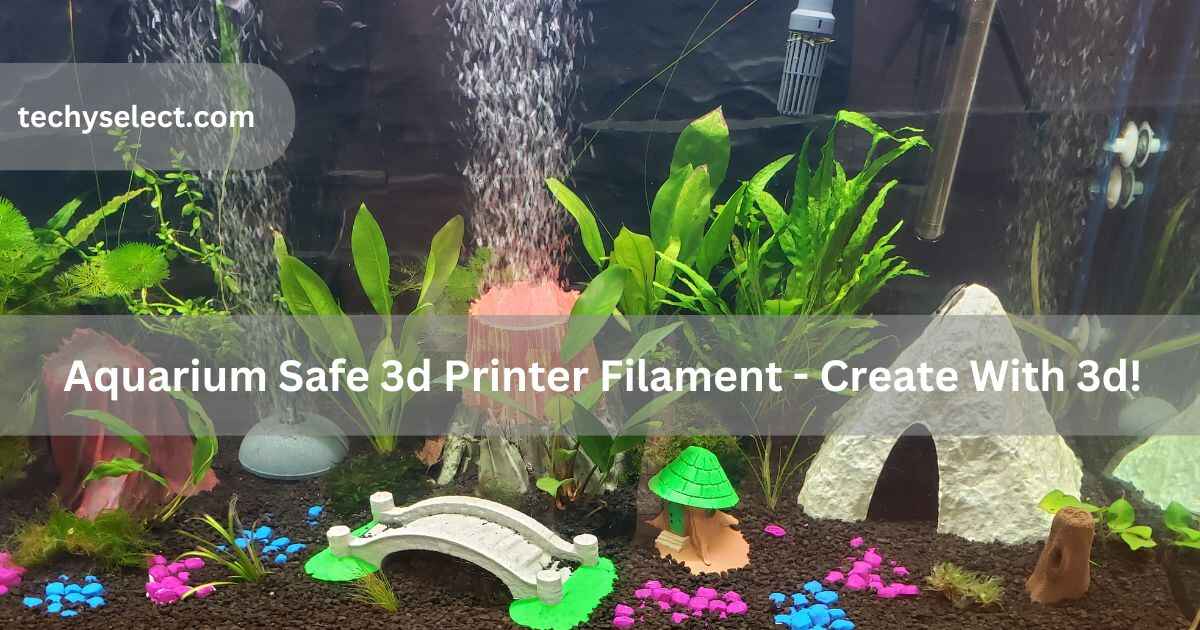When I started 3D printing for my aquarium, I learned not all filaments are safe. I now use PETG because it’s strong and water-resistant. Sealing with food-safe epoxy protects my fish and keeps prints long-lasting underwater.
aquarium safe 3d printer filament ( short answer )
Aquarium-safe 3D printer filaments like PETG are durable, water-resistant, and non-toxic for fish. PLA works short-term but needs sealing for safety. Always use food-safe epoxy to seal prints for long-lasting, fish-friendly aquarium decorations.
In this article we will discuss aquarium safe 3d printer filament.
What Is 3D Printing?- Innovate with 3D!
3D printing is a way to make objects by building them layer by layer. It starts with a digital design created on a computer. A special machine, called a 3D printer, reads the design and creates the object using materials like plastic, metal, or resin. It’s like printing on paper, but instead of flat pictures, it makes real, solid items. People use 3D printing for toys, tools, decorations, and even medical and industrial parts.
Should I Get My Own 3D Printer?
Getting your own 3D printer can be a great investment if you enjoy creating custom items for your aquarium or other projects. It offers the freedom to design and print whatever you need, whenever you want. However, keep in mind the initial cost, maintenance, and learning curve involved. If you’re up for it, it can be a fun and rewarding hobby.
What is an Aquarium Safe 3d Printer Filament?
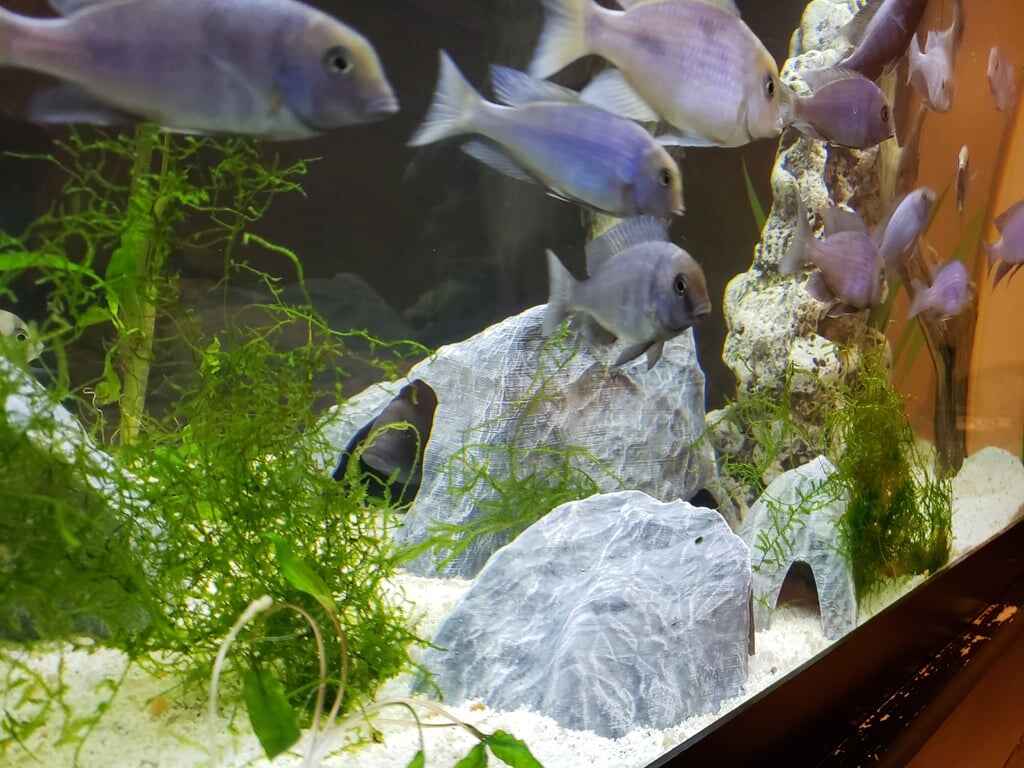
Aquarium safe 3D printer filament is a special type of material used to print objects that will be placed in aquariums. These filaments are designed to be non-toxic and safe for fish and other aquatic life. They are made from materials that won’t harm the water quality or the creatures living in the tank. This type of filament is perfect for creating decorations, plant holders, or even fish habitat accessories without causing any damage to the ecosystem.
Why does aquarium safety matter?
Aquarium safety matters because the health of fish and other aquatic animals depends on their environment. Harmful materials, like toxic chemicals or sharp objects, can hurt them or affect the water quality. If the items in the tank aren’t safe, they can cause illness, stress, or even death to the fish. Using aquarium-safe materials ensures that decorations, plants, and accessories won’t harm the aquatic life or interfere with the balance of the tank, keeping everything healthy and happy.
Key Factors to Consider for Aquarium Filaments – Test Before Adding!
Some Key factors are given below:
- Additives and Colors: Check if the filament contains dyes or chemicals that could harm aquatic life. Opt for non-toxic or FDA-approved options, especially when using colored filaments.
- Cleaning After Printing: Always clean 3D prints thoroughly before placing them in your aquarium to remove any leftover particles or chemicals that could harm the water quality.
- Durability Underwater: Ensure the filament is durable enough to withstand long-term use in water without breaking down or losing its shape.
- Testing for Safety: Test your 3D printed items in a separate water container to observe any changes or effects before introducing them into your aquarium.
By considering these points, you can choose the right materials to keep your aquarium safe and healthy.
What are the best aquarium-safe filaments for 3D printing?
The best aquarium-safe filaments for 3D printing include:
- PLA (Polylactic Acid)
- PETG (Polyethylene Terephthalate Glycol)
- ABS (Acrylonitrile Butadiene Styrene)
- Nylon
1. PLA (Polylactic Acid)
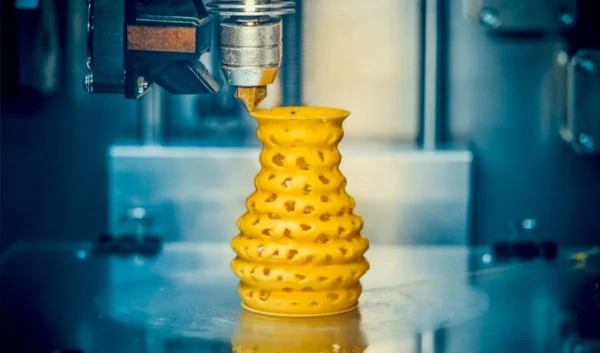
PLA (Polylactic Acid) is a biodegradable plastic made from renewable resources like cornstarch or sugarcane. It is a popular 3D printing filament due to its ease of use, low environmental impact, and non-toxic nature. PLA is commonly used for creating various items, including aquarium decorations.
PLA in Water – Chemical Composition and Breakdown:
PLA is made from lactic acid, derived from natural plant materials. When submerged in water, PLA can begin to degrade over time, especially in saltwater. In freshwater, it may take longer to break down. While biodegradable, PLA’s breakdown can release particles that could impact water quality if not used properly.
PLA Durability in Aquatic Environments:
PLA is not the most durable material for long-term use in aquariums, especially in saltwater. Over time, it can absorb water, weaken, and lose its shape. PLA is more suitable for short-term decorations in freshwater tanks, but it may degrade in saltwater or high-moisture environments, reducing its lifespan.
The Impact on Water Quality and Aquatic Life:
While PLA is non-toxic, its breakdown in water can potentially release small particles that may affect water quality. If the filament degrades quickly, it could lead to changes in pH levels or contribute to waste buildup, which may harm aquatic life. Proper care and monitoring are necessary when using PLA in aquariums.
Is PLA for 3D Printing Aquarium Safe:
PLA is generally safe for aquariums because it is non-toxic and made from natural materials like cornstarch. However, it can break down over time in water, especially in saltwater tanks, so it’s best used for decorations in freshwater aquariums.
Alternatives to PLA for Aquarium Use:
For more durable and long-lasting aquarium-safe prints, filaments like PETG and ABS are better alternatives. PETG is stronger, more moisture-resistant, and safer for both freshwater and saltwater tanks. ABS, while not biodegradable, is highly durable and suitable for aquarium accessories when used carefully.
PLA Applications in Aquariums:
- PLA is best for temporary or decorative items like fish tank ornaments, plant holders, or simple structures.
- It is ideal for use in freshwater aquariums where it won’t degrade as quickly.
- PLA can be used for non-water-submerged items, such as external filter parts or aquarium stands.
- Avoid using PLA for long-term or submerged applications in saltwater tanks.
Best Practices for Using PLA in Aquariums:
- Choose items that won’t stay submerged for long periods, especially in saltwater tanks.
- Regularly inspect PLA prints for signs of wear or degradation.
- Avoid using PLA for items that fish or aquatic life may chew on.
- Monitor water quality frequently to ensure no harmful effects from the PLA material.
- Use PLA for short-term, decorative purposes rather than long-lasting items in aquariums.
2. PETG (Polyethylene Terephthalate Glycol)
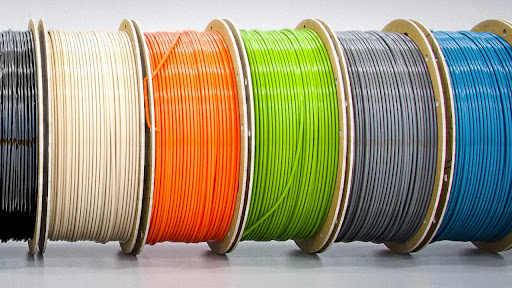
PETG (Polyethylene Terephthalate Glycol) is a durable, water-resistant 3D printing filament. It’s known for its clarity, strength, and ease of use. PETG is ideal for creating aquarium-safe objects due to its low toxicity and resistance to moisture.
Is PETG for 3D Printing Aquarium Safe:
PETG is generally safe for 3D printing aquarium items. It is non-toxic, durable, and resistant to moisture, making it a good choice for creating decorations, plant holders, or accessories. However, ensure that no harmful additives are used. PETG is suitable for both freshwater and saltwater aquariums when properly maintained.
Compatibility and Versatility:
PETG is compatible with most 3D printers and versatile in use. It’s perfect for creating aquarium decorations, plant holders, or custom accessories. PETG offers excellent adhesion and can withstand harsh environments, making it ideal for both freshwater and saltwater tanks.
PETG Mechanical Properties:
It is strong, flexible, and impact-resistant. It can withstand stress without cracking or breaking, making it a reliable choice for long-lasting aquarium accessories. It also maintains its shape under high temperatures, ensuring durability in aquatic conditions.
Cleaning and Maintenance:
Cleaning PETG items is simple as it resists bacteria and algae buildup. Use mild soap and water to clean 3D printed objects. Regular inspection for wear or signs of degradation is recommended to maintain the longevity and safety of aquarium items.
3. ABS (Acrylonitrile Butadiene Styrene)
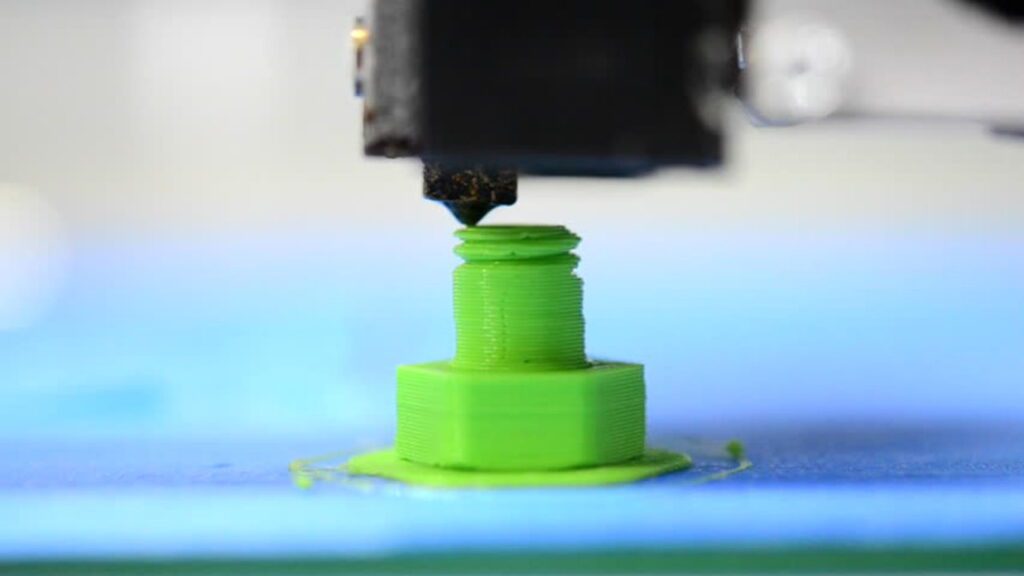
ABS (Acrylonitrile Butadiene Styrene) is a strong, durable plastic commonly used for 3D printing. It is resistant to heat and impact, making it ideal for creating sturdy items. ABS is often used for aquarium decorations and accessories but may release fumes during printing, requiring ventilation.
Is ABS for 3D Printing Aquarium Safe?
ABS can be safe for 3D printing aquarium items if used correctly. It is durable and heat-resistant, but it may release harmful fumes during printing, so proper ventilation is needed. It is better suited for non-submerged aquarium parts, like decorations or filter components.
4. Nylon
Nylon is a strong, flexible, and durable material often used in 3D printing. It is resistant to wear and tear, making it ideal for functional parts. Nylon can be used in aquariums, but ensure it’s a food-safe version to prevent harm.
Is Nylon for 3D Printing Aquarium Safe?
Yes, nylon can be safe for 3D printing aquarium items, but you’ll want to make sure you’re using a food-safe version. It’s a strong and flexible material, great for functional pieces. Just double-check it doesn’t have harmful additives and keep an eye on it for wear over time to keep your aquarium safe and healthy.
Are Colored Filaments Safe for Aquariums?
Colored filaments can be safe for aquariums, but it depends on the type of dye used. Some dyes might contain harmful chemicals that can affect water quality and harm aquatic life. When using colored filaments, look for ones labeled as non-toxic or food-safe. Always rinse and test the printed item before placing it in the tank. Monitoring your aquarium’s water quality ensures the safety of your fish and plants.
Read Also: What Is The Purpose Of A 3d Printer – Innovate Faster!
What Aquarium Items Can I Create with a 3D Printer?
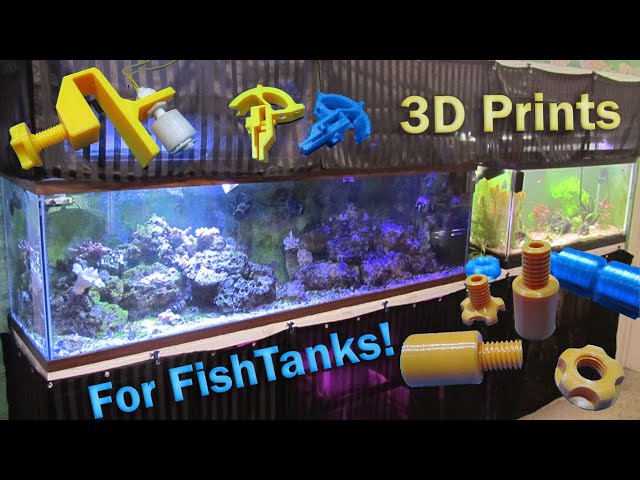
A 3D printer opens up endless possibilities for customizing your aquarium. You can design unique, functional, and decorative items to enhance your tank’s environment. Here are some ideas:
- Fish Tank Ornaments: Create custom decorations to match your tank’s theme.
- Plant Holders: Print sturdy holders to organize and display aquatic plants.
- Hiding Spots for Fish: Design caves or shelters for shy fish to feel secure.
- Filter or Pump Parts: Replace or upgrade aquarium equipment components.
- Feeding Stations: Print platforms or containers to organize fish food delivery.
- Custom Lids or Covers: Create perfectly fitting lids to protect your tank.
How Can I Get Custom Designs and Prints for My Aquarium?
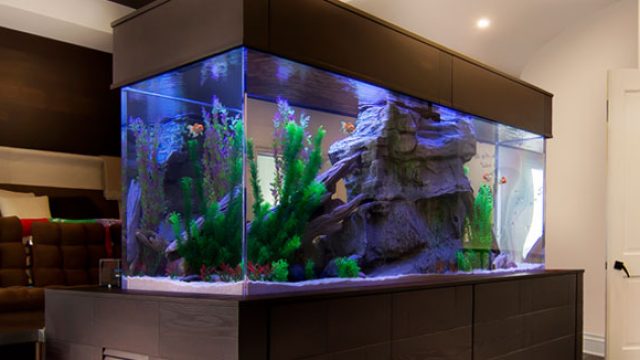
If you want to add some personal touches to your aquarium with custom-made items, there are several great options to explore. Here’s how you can turn your ideas into reality with custom designs and prints:
- Online 3D Printing Services: Websites like Shapeways or Treatstock let you upload designs or choose from pre-made ones, and they handle the printing for you.
- Local Makerspaces or Print Shops: Many local makerspaces or 3D printing shops can help design and print items for your aquarium.
- Freelance Designers: Hire a freelance 3D designer from platforms like Fiverr or Upwork to create a custom design.
- DIY with a 3D Printer: If you have access to a 3D printer, you can try designing and printing items yourself using software like Tinkercad.
- Community Forums: Join aquarium or 3D printing forums where enthusiasts may offer design and printing services.
Where Can I Buy 3D Printed Aquarium Parts?
You can buy 3D printed aquarium parts from online marketplaces like Etsy, where independent creators sell custom aquarium accessories. Websites such as Shapeways or Treatstock also offer pre-made designs that can be printed and shipped to you. Additionally, local makerspaces or 3D printing shops may offer custom printing services, allowing you to bring your own designs to life or choose from available options for aquarium parts.
Where Can I Find More Information On 3D Printing?
- Online Courses: Websites like Coursera and Udemy offer beginner to advanced 3D printing courses.
- YouTube: A great resource for tutorials and project ideas.
- Forums: Join communities like Reddit’s r/3Dprinting for discussions and advice.
- Books: Many books cover the basics of 3D printing, from design to finishing techniques.
- Blogs: Follow blogs like All3DP for the latest news and reviews on 3D printing.
Read Also: Why Does My 3d Printer Stop Printing Halfway Through – Upgrade Software!
Frequently Asked Questions
1. Is PETG Toxic to Fish?
PETG is generally non-toxic to fish and is considered a safe option for aquarium use. It is resistant to moisture and doesn’t leach harmful chemicals into the water. However, ensure the filament doesn’t contain toxic additives or coatings.
2. Can You 3D Print Stuff for a Fish Tank?
Yes, you can 3D print decorations, plant holders, and other accessories for fish tanks using safe filaments like PLA, PETG, and ABS. Make sure the materials used are non-toxic and don’t harm the water quality or aquatic life.
3. What Plastic is Safe for Fish Tanks?
Safe plastics for fish tanks include PLA, PETG, and food-safe ABS. These materials are non-toxic, durable, and resistant to water damage. Avoid plastics with toxic chemicals or harmful coatings that could affect the aquarium environment.
4. How Does PETG Compare to Other Aquarium-Safe Filaments?
PETG is stronger and more durable than PLA, making it better for long-term use in both freshwater and saltwater tanks. It’s also more resistant to moisture and wear. PLA, while safe, is less durable in high-moisture environments compared to PETG.
5. What Post-Processing Steps Are Necessary for Aquarium-Safe 3D Prints?
Post-processing steps include thoroughly cleaning the prints to remove any residue, smoothing rough edges, and ensuring no harmful chemicals or coatings are left on the item. Sealing prints with non-toxic waterproof coatings can also enhance durability and safety.
6. Are There Any Specific Brands of Aquarium-Safe Filaments Recommended?
Brands like Hatchbox (for PLA), Prusament (for PETG), and eSUN (for various filaments) are known for producing high-quality, safe filaments. Always check if the filament is specifically labeled as aquarium-safe or non-toxic before use in aquatic environments.
Conclusion
In conclusion, 3D printing can be a fun and creative way to add custom items to your aquarium. It’s important to choose the right, aquarium-safe filament like PLA, PETG, or ABS. Always check that the materials are non-toxic and won’t harm aquatic life. Regularly inspect your prints for wear and tear. With the right care and safety precautions, 3D printing can help enhance your aquarium safely and uniquely.
Read More:
- What Does Fdw Mean On Hp Printer – Simplify Printing!
- Practical Uses For 3d Printer – Reimagine What’s Possible!
- How Long Can A 3d Printer Safely Print – Monitor Long Prints!
- How Long Can A 3d Printer Run – Run Prints Safely!
- Edible 3d Printer Filament – Transform Food Ideas!
- Dishwasher Safe 3d Printer Filament – Print Durable 2024!
